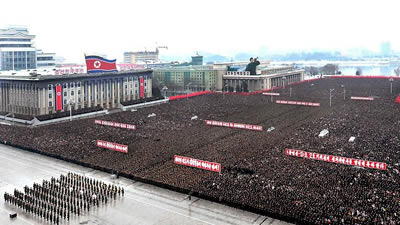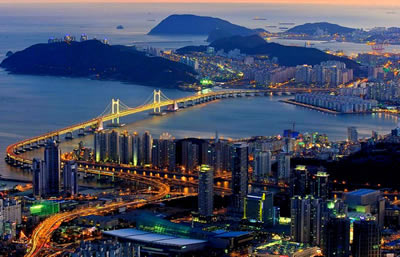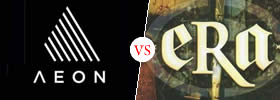Difference between North and South Korea
Key Difference: The Democratic People's Republic of Korea, also known as North Korea, was established on 9 September 1948. It was built up in its overseer’s image, i.e. a communist dictatorship. The Republic of Korea, commonly known as South Korea, on the other hand, was established on August 15, 1948, and like the United States was a capitalist democracy.

The Korean Peninsula was not always divided into North Korea and South Korea. It was united. In fact, it was united up until 1945, which is quite recent in the scale of history. The Koreans have not had it easy. Historically, the Korean Peninsula hosted numerous different kingdoms dating back to ancient times; all with different borders, including multiple kingdoms existing at the same time. Eventually, the Koreans found themselves under Chinese domination, which lasted up to the nineteenth century.
In 1897, the Koreans fought for and won their independence from the Chinese and became the Korean Empire. However, this victory did not last long. In 1910, after the Russo-Japanese War, the Korean Empire was annexed to the Empire of Japan. Soon after, Japan was defeated in World War II (1939-1945), after which the Korean Peninsula was taken as the spoils of war by the victors of the war, the Allies.
In 1945, the Korean Peninsula was divided into two: the northern part of Korea was occupied by the Soviet Union, while the southern part was taken over by the United States. The goal, as set by the UN, was for the Allies to help support the area after war, help rebuilt it, and eventually help develop a unified nation. However, as history testifies, that did not happen.
After much trial and tribulation, the Democratic People's Republic of Korea, also known as North Korea, was established on 9 September 1948. It was built up in its overseer’s image, i.e. a communist dictatorship. The Republic of Korea, commonly known as South Korea, on the other hand, was established on August 15, 1948, and like the United States was a capitalist democracy.
 As the relations between Soviet Union and United States worsened, so did the relations between communist North Korea, and capitalist South Korea. This eventually culminated in the Korean War, which lasted from 25 June 1950 to 27 July 1953. Each side was supported by their ex-overseers. Each side sought to conquer the other. The war ended with the Korean Armistice Agreement, which divided the nations along the demarcation line. Since its division, the countries have grown further apart in all instances: government, leaders, economy, etc.
As the relations between Soviet Union and United States worsened, so did the relations between communist North Korea, and capitalist South Korea. This eventually culminated in the Korean War, which lasted from 25 June 1950 to 27 July 1953. Each side was supported by their ex-overseers. Each side sought to conquer the other. The war ended with the Korean Armistice Agreement, which divided the nations along the demarcation line. Since its division, the countries have grown further apart in all instances: government, leaders, economy, etc.
On 11 March 2013, North Korea claimed that it had invalidated the 1953 armistice and that it "is not restrained by the North-South declaration on non-aggression". Hence, it will try to overtake South Korea.
Comparison between North and South Korea:
|
|
North Korea |
South Korea |
|
Official Name |
Democratic People's Republic of Korea (DPRK) |
Republic of Korea (ROK) |
|
Motto |
Kangsŏng Daeguk (Powerful and Prosperous Nation) |
"홍익인간" (Benefit Broadly the Human World) |
|
Anthem |
Aegukka (The Patriotic Song) |
Aegukka (The Patriotic Song) |
|
Official languages |
Korean |
Korean |
|
Official scripts |
Chosŏn'gŭl |
Hangul |
|
Government |
Single-party state (various interpretations) |
Unitary presidential constitutional republic |
|
Leaders |
Kim Jong-un – Supreme Leader |
Park Geun-hye – President Jung Hong-won – Prime Minister |
|
Legislature |
Supreme People's Assembly |
National Assembly |
|
Establishment |
Korean Empire - 1897~1910 Japanese territory - 1910~1945 Liberation - 15 August 1945 Provisional People's Committee for North Korea established - February 1946 DPRK established - 9 September 1948 |
Korean Empire - 1897~1910 Japanese territory - 1910~1945 Liberation - 15 August 1945 UN trusteeship - 1945~1948 Republic proclaimed - August 15, 1948 |
|
Area |
120,540 km2 (46,528 sq mi) – 98th in the world
|
100,210 km2 (38,691 sq mi) – 109th in the world |
|
Population |
24,895,000 (2013 estimate) – 48th in the world |
51,302,044 (2014 estimate) – 26th in the world |
|
GDP (PPP) |
$40 billion (2011 estimate) |
$1.790 trillion (2014 estimate) |
|
Currency |
North Korean won (₩) (KPW) |
South Korean won (₩) (KRW) |
|
Location |
The northern part of the Korean Peninsula in East Asia, lying between latitudes 37° and 43°N, and longitudes 124° and 131°E. |
The southern part of the Korean Peninsula in East Asia, lying between latitudes 33° and 39°N, and longitudes 124° and 130°E. |
|
Borders |
North Korea shares land borders with China and Russia to the north, and borders South Korea along the Korean Demilitarized Zone. To its west are the Yellow Sea and Korea Bay, and to its east lies Japan across the Sea of Japan (East Sea of Korea). |
South Korea is flanked by the Yellow Sea to the west, and Sea of Japan (East Sea) to the east. Its southern tip lies on the Korea Strait and the East China Sea. |
|
Capital and Largest City |
Pyongyang |
Seoul |
|
Other major cities |
Kaesong in the south, Sinuiju in the northwest, Wonsan and Hamhung in the east and Chongjin in the northeast. |
Busan (with a population of 3.5 million), Incheon (2.5 million), Daegu (2.5 million), Daejeon (1.4 million), Gwangju (1.4 million) and Ulsan (1.1 million). |
|
Geography |
Some 80% of North Korea is composed of mountains and uplands, separated by deep and narrow valleys. The coastal plains are wide in the west and discontinuous in the east. A great majority of the population lives in the plains and lowlands. Forest covers over 70% of the country, mostly on steep slopes. |
South Korea can be divided into four general regions: an eastern region of high mountain ranges and narrow coastal plains; a western region of broad coastal plains, river basins, and rolling hills; a southwestern region of mountains and valleys; and a southeastern region dominated by the broad basin of the Nakdong River. |
|
Climate |
A combination of a continental climate and an oceanic climate, with four distinct seasons. Experiences warm summers and cold, dry winters. In summer, there is a short rainy season called changma. |
South Korea tends to have a humid continental climate and a humid subtropical climate, and is affected by the East Asian monsoon, with precipitation heavier in summer during a short rainy season called jangma (장마), which begins end of June through the end of July. |
|
Environment |
The environment of North Korea has been reported to be in a state of "crisis", "catastrophe", or "collapse" Cultivation, logging, and natural disasters have all put pressure on North Korea's forests, leading to soil erosion, soil depletion, and increased risk of flooding. |
South Korea has 20 national parks and popular nature places like the Boseong Tea Fields, Suncheon Bay Ecological Park, and the first national park of Jirisan. |
|
Military |
The Korean People's Army (KPA) is the name of North Korea's military organization. The KPA has 1,106,000 active and 8,389,000 reserve and paramilitary troops, making it the largest military institution in the world. The KPA has five branches: Ground Force, Naval Force, Air Force, Special Operations Force, and Rocket Force. |
A long history of invasions by neighbors and the unresolved tension with North Korea have prompted South Korea to allocate 2.6% of its GDP and 15% of all government spending to its military (Government share of GDP: 14.967%), while maintaining compulsory conscription for men. Consequently, South Korea has the world's sixth largest number of active troops (650,000 in 2011), the world's second-largest number of reserve troops (3,200,000 in 2011) and the eleventh largest defense budget. The South Korean military consists of the Army (ROKA), the Navy (ROKN), the Air Force (ROKAF), and the Marine Corps (ROKMC), and reserve forces |
|
Demographics |
With the exception of a small Chinese community and a few ethnic Japanese, North Korea's 24,852,000 people are ethnically homogeneous. |
South Korea is noted for its population density, which is 487 per square kilometer, more than 10 times the global average. Most South Koreans live in urban areas, because of rapid migration from the countryside during the country's quick economic expansion in the 1970s, 1980s and 1990s. After World War II and the division of the Korean Peninsula, about four million people from North Korea crossed the border to South Korea. South Korea is one of the most ethnically homogeneous societies in the world, with more than 99% of inhabitants having Korean ethnicity. Koreans call their society 단일민족국가, Dan-il minjok guk ga, "the single race society". |
|
Education |
The 2008 census listed the entire population as literate, including those in the age group beyond 80. An 11-year free, compulsory cycle of primary and secondary education is provided in more than 27,000 nursery schools, 14,000 kindergartens, 4,800 four-year primary and 4,700 six-year secondary schools. The main deficiencies of higher education are the heavy presence of ideological subjects, which comprise 50% of courses in social studies and 20% in sciences, and the imbalances in curriculum. |
Education in South Korea is regarded as crucial to financial and social success, and competition is consequently fierce, with many participating in intense outside tutoring to supplement classes. In the 2006 results of the OECD Programme for International Student Assessment, South Korea came first in problem solving, third in mathematics and seventh in science. South Korea's education system is technologically advanced and it is the world's first country to bring high-speed fibre-optic broadband internet access to every primary and secondary school nation-wide. |
|
Language |
North Korea shares the Korean language with South Korea, although some dialect differences exist within both Koreas. North Koreans refer to their Pyongyang dialect as munhwa ("cultured language") as opposed to South Korea's Seoul dialect, the p'yojuno ("standard language"), which is viewed as decadent because of its usage of Japanese and English loanwords. |
South Korea shares the Korean language with North Korea, although some dialect differences exist within both Koreas. South Koreans mainly speak the p'yojuno dialect, with usage of Japanese and English loanwords. Hangul is the official script. |
|
South Korea Religion |
Freedom of religion and the right to religious ceremonies are constitutionally guaranteed, but religions are restricted in practice. According to Religious Intelligence, 64.3% of the population are irreligious adherents of the Juche idea, 16% practice Korean shamanism, 13.5% practice Chondoism, 4.5% are Buddhist and 1.7% are Christian. |
As of 2005, just under half of the South Korean population expressed no religious preference. According to the 2007 census, 29.2% of the population at that time was Christian (18.3% identified themselves as Protestants, 10.9% as Roman Catholics), and 22.8% were Buddhist. |
|
Economy |
North Korea has been maintaining one of the most closed and centralized economies in the world since the 1940s. It regularly faces chronic economic problems. Industrial capital stock is nearly beyond repair as a result of years of underinvestment, shortages of spare parts, and poor maintenance. Large-scale military spending draws off resources needed for investment and civilian consumption. Industrial and power outputs have stagnated for years at a fraction of pre-1990 levels. Frequent weather-related crop failures aggravated chronic food shortages caused by on-going systemic problems, including a lack of arable land, collective farming practices, poor soil quality, insufficient fertilization, and persistent shortages of tractors and fuel. |
South Korea's market economy ranks 15th in the world by nominal GDP and 12th by purchasing power parity (PPP), identifying it as one of the G-20 major economies. It is a developed country with a high-income economy and is the most industrialised member country of the OECD. Its economy has improved greatly from the 1960s. In the 1960s, GDP per capita was comparable with levels in the poorer countries of Africa and Asia. In 2004, South Korea joined the trillion-dollar club of world economies, and is currently the world's 12th largest economy. Initially, a system of close government and business ties, including directed credit and import restrictions, made this success possible. The government promoted the import of raw materials and technology at the expense of consumer goods, and encouraged savings and investment over consumption. South Korea adopted numerous economic reforms following the Asian financial crisis of 1997-98, including greater openness to foreign investment and imports. The South Korean economy's long term challenges include a rapidly aging population, inflexible labor market, dominance of large conglomerates (chaebols), and heavy reliance on exports, which comprise about half of GDP. |
|
Culture |
Despite a historically strong Chinese influence, Korean culture has shaped its own unique identity. North Koreans have almost no exposure to foreign influence apart from occasional performances like the New York Philharmonic Orchestra concert in February 2008. Contemporary cultural expression in the country serves a primarily didactic purpose by promoting the Juche idea and Korean reunification. |
South Korea shares its traditional culture with North Korea, but the two Koreas have developed distinct contemporary forms of culture since the peninsula was divided in 1945. Historically, while the culture of Korea has been heavily influenced by that of neighboring China, it has nevertheless managed to develop a unique cultural identity that is distinct from its larger neighbor. The industrialization and urbanization of South Korea have brought many changes to the way Korean people live. |
|
Art |
Visual arts are generally produced in the aesthetics of Socialist realism. North Korean painting combines the influence of Soviet and Japanese visual expression to instill a sentimental loyalty to the system. Portraits and sculptures depicting Kim Il-sung, Kim Jong-il and Kim Jong-un are classed as "Number One works" |
Korean art has been highly influenced by Buddhism and Confucianism, which can be seen in the many traditional paintings, sculptures, ceramics and the performing arts. Korean pottery and porcelain, such as Joseon's baekja and buncheong, and Goryeo's celadon are well known throughout the world. The Korean tea ceremony, pansori, talchum and buchaechum are also notable Korean performing arts. |
|
Architecture |
Because of North Korea's tumultuous history, construction and destruction has been repeated endlessly, resulting in an interesting melange of architectural styles and designs. Korean traditional architecture is characterized by its harmony with nature. Often brutalist architecture was championed. North Korean architects studied in Moscow or Soviet satellites, and brought back socialist worker styles and huge celebratory people's architecture on a grand and massively impressive scale. Modern Architecture is practical with nomenclatura living in Soviet-style apartment blocks, farmers and rural workers lived in traditional houses as they always had; urbanization did not occur. Grand buildings and huge public squares were developed in Pyongyang as architectural showpieces. Nearly all architecture was government sponsored, and maintained great homogeneity of function and style. |
Because of South Korea's tumultuous history, construction and destruction has been repeated endlessly, resulting in an interesting melange of architectural styles and designs. Korean traditional architecture is characterized by its harmony with nature. Korean architecture entered a new phase of development during the post-Korean War reconstruction, incorporating modern architectural trends and styles. |
|
Music |
The government emphasized optimistic folk-based tunes and revolutionary music throughout most of the 20th century. Ideological messages are conveyed through massive orchestral pieces. |
Until the 1990s, trot and ballads dominated Korean popular music. The emergence of the rap group Seo Taiji and Boys in 1992 marked a turning point for Korean popular music, also known as K-pop, as the group incorporated elements of popular musical genres of rap, rock, and techno into its music. Hip hop, dance and ballad oriented acts have become dominant in the Korean popular music scene, though trot is still popular among older Koreans. |
|
Literature |
Unlike the former Soviet Union, no literary underground exists and there are no known dissident writers. All publishing houses are owned by the government or the KWP because they are considered an important tool for propaganda and agitation. Foreign literature did not appear until 1984, when North Korean editions of Indian, German, Chinese and Russian fairy tales, Tales from Shakespeare and some works of Bertolt Brecht and Erich Kästner were printed. |
Serious fiction is provided by the choices of some contemporary authors by the Korea Literature Translation Institute for translation into English, French, German and Spanish. Various international literature is translated into Korean. The Korea literature market is dominated by typical mass market genres, including: Popular novels, detective novels, Political fiction, Fantasy fiction, Science fiction & boundary literature. Non-fiction essayists include Chang Young-hee. Notable modern poets include Moon Deok-soo, Choi Nam-son and Kim Sowol, Ki Hyung-do, Chon Sang-pyong. |
|
Media |
North Korean media are under some of the strictest government control in the world. According to Freedom House, all media outlets serve as government mouthpieces, all journalists are Party members and listening to foreign broadcasts carries the threat of a death penalty Government policies towards film are no different than those applied to other arts — motion pictures serve to fulfill the targets of "social education". Some of the most influential films are based on historic events (An Jung-geun shoots Itō Hirobumi) or folk tales (Hong Gildong). Most movies have predictable propaganda story lines which make cinema an unpopular entertainment. Viewers only see films that feature their favorite actors. Western productions are only available at private showings to high-ranking Party members, although the 1997 Titanic is frequently shown to university students as an example of Western culture. Access to foreign media products is available through smuggled DVDs and television or radio broadcasts in border areas. |
In addition to domestic consumption, South Korean mainstream culture, including televised drama, films, and popular music, also generates significant exports to various parts of the world. This phenomenon, often called "Hallyu" or the "Korean Wave", has swept many countries in Asia and other parts of the world. Since the success of the film Shiri in 1999, Korean film has begun to gain recognition internationally. Korean television shows, especially the short form dramatic mini-series called "dramas", have also become popular outside of Korea, becoming another driving trend for wider recognition. |
|
Cuisine |
Korean cuisine has evolved through centuries of social and political change. Originating from ancient agricultural and nomadic traditions in southern Manchuria and the Korean peninsula, it has gone through a complex interaction of the natural environment and different cultural trends. Rice dishes and kimchi are staple Korean food. In a traditional meal, they accompany both side dishes (panch'an) and main courses like juk, pulgogi or noodles. Soju liquor is the best-known traditional Korean spirit. |
Korean cuisine is largely based on rice, noodles, tofu, vegetables, fish and meats. Traditional Korean meals are noted for the number of side dishes, banchan (반찬), which accompany steam-cooked short-grain rice. Every meal is accompanied by numerous banchan. Kimchi (김치), a fermented, usually spicy vegetable dish is commonly served at every meal and is one of the best known Korean dishes. Korean cuisine usually involves heavy seasoning with sesame oil, doenjang (된장), a type of fermented soybean paste, soy sauce, salt, garlic, ginger, and gochujang (고추장), a hot pepper paste. Other well-known dishes are Bulgogi (불고기), grilled marinated beef, Gimbap (김밥), and Tteokbokki (떡볶이), a spicy snack consisting of rice cake seasoned with gochujang or a spicy chili paste. |
|
Sports |
North Koreans have an almost obsessive sports mentality and most schools have daily practice in association football, basketball, table tennis, gymnastics, boxing and others. The DPR Korea League is popular inside the country and its games are often televised. The national football team, Chollima, competed in the FIFA World Cup in 2010, |
The martial art taekwondo originated in Korea. Other Korean martial arts include taekkyeon, hapkido, Tang Soo Do, Kuk Sool Won, kumdo and subak. Football has traditionally been regarded as the most popular sport in Korea. Recent polling indicates that a majority, 41% of South Korean sports fans continue to self-identify as football fans, with baseball ranked 2nd at 25% of respondents. The national football team became the first team in the Asian Football Confederation to reach the FIFA World Cup semi-finals in the 2002 FIFA World Cup, jointly hosted by South Korea and Japan. Basketball is a popular sport in the country as well. Others include professional triathlon racing, Formula One racing, and domestic horse racing. |
|
Holidays |
The birthday of Kim Jong-il is one of the most important public holidays in the country. Others include Generalissimo Day, Tree Planting Day, International Women’s Day, Seotdal Geumeum, Seollal, Kim Il-sung's Birthday, Kang Pan-sok’s Birthday, Military Foundation Day, Victory Day, Liberation Day, National Independence Day, Party Foundation Day, Kim Jong-suk's Birthday, Constitution Day, etc. |
There are many official public holidays in South Korea, such as Korean New Year's Day, or "Seollal," on the first day of the Korean lunar calendar; Korean Independence Day on on March 1st; Memorial Day on June 6th; Constitution Day on July 17; Liberation Day on August 15; Every 15th day of the 8th lunar month, Koreans celebrate the Mid-autumn Festival; On October 1st, Armed Forces day is celebrated; October 3rd is National Foundation Day; Hangul Day, on October 9th. There are also unofficial holidays celebrated in Korea, such as Pepero Day. |
|
Notable Points |
North Korea is widely accused of having one of the worst human rights records in the world. North Koreans have been referred to as "some of the world's most brutalized people" by Human Rights Watch, because of the severe restrictions placed on their political and economic freedoms |
South Korea has a very technologically advanced culture. South Korean corporations Samsung and LG were ranked first and third largest mobile phone companies in the world in Q1/2012. An estimated 90% of South Koreans own a mobile phone. South Korea has the fastest Internet download speeds in the world, with an average download speed of 17.5 Mbit/s. It is the world's first country to bring high-speed fibre-optic broadband internet access to every primary and secondary school nation-wide. |
Image Courtesy: heraldsun.com.au, ccny.cuny.edu









Add new comment